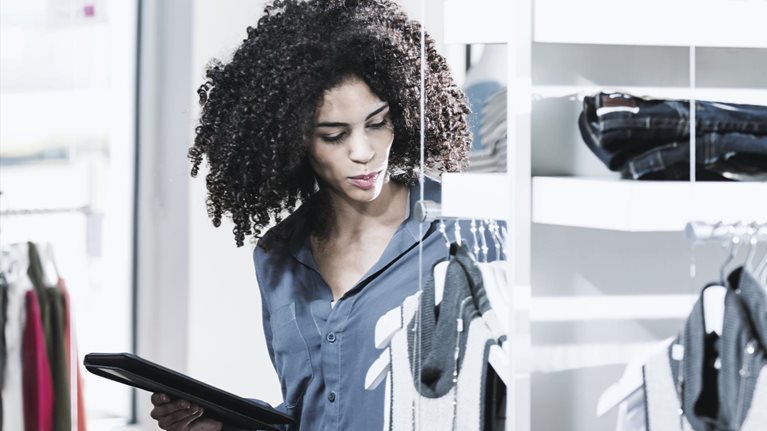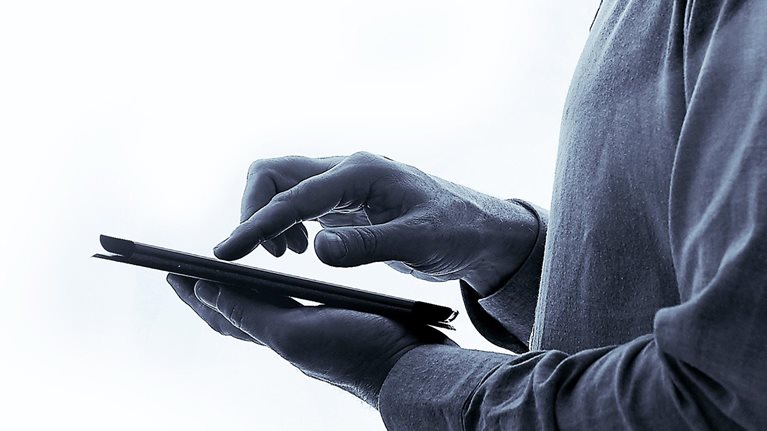The COVID-19 pandemic has upended the retail industry, forcing the closure of physical stores and causing uncertainty for the future of the in-store experience. These abrupt shifts have left many retailers scrambling to effectively serve customers through other channels. Digital-first and omnichannel retailers have pivoted more easily, but retailers that prioritized physical stores and face-to-face engagement over omnichannel strategies have struggled to respond.
For retailers, the starting point matters in a crisis. Organizations that can quickly reimagine their omnichannel approach to create a distinctive customer experience will recover faster from the pandemic. Analysis of the financial crisis of 2008 shows that customer experience leaders saw a shallower downturn, rebounded more rapidly, and achieved three times the total shareholder returns in the long run compared with the market average (Exhibit 1).

The pandemic has changed consumer behaviors, some permanently.1 We have seen a consolidation of shopping trips: in China, for example, the number of transactions in grocery declined by 30 percent during the pandemic, while the average value per transaction increased by 69 percent. In the United States, e-commerce availability and hygiene considerations are increasing store switching behavior, with 17 percent of consumers shifting away from their primary store. Many customers have also tried new omnichannel models: buy online, pick up in store (BOPIS) grew 28 percent year-over-year in February compared with 18 percent in January, and grocery delivery is up by 57 percent.2 More important, many of these new engagement models are here to stay. Consumers report high intention to continue using models such as BOPIS (56 percent) and grocery delivery (45 percent) after the pandemic.
To remain relevant in this changed environment, retailers should set a North Star to guide their aspirations for customer experience, with specific goals across five actions: double down on digital, inject innovation into omnichannel, transform store operations and win on “SafeX,” reimagine the physical network, and embrace an agile operating model (Exhibit 2).

How retailers can meet new customer expectations
The savviest retailers have spent years creating omnichannel strategies that blend physical and online channels to engage consumers in the channel of their choosing. COVID-19’s impact on customer behavior has reshuffled the deck. In-person interaction has dramatically changed or been supplanted by digital engagement, and early indications suggest that much of this shift may endure in the long term. E-commerce sales in apparel, department stores, and beauty products have increased by nearly ten percentage points, on average, since the onset of the pandemic. In grocery, e-commerce penetration, which has risen from 2 to 3 percent before the crisis to 8 to 10 percent during its peak, is expected to settle at twice the previous “normal” level, 5 to 7 percent, by year’s end.
Looking forward, we believe retailers should focus on five actions to build more resilience in their customer experience and to emerge even stronger in the recovery.
1. Double down on digital
COVID-19 has dramatically and suddenly shifted more customer traffic to digital channels. Consider that online sales, which increased at a 14 percent compound annual growth rate (CAGR) over the past four years, grew by 25 percent in a two-week period in March 2020—led by grocery purchases.3 The profound impact of the pandemic on consumer shopping habits has increased the urgency for retailers to expand their digital presence quickly.
Dial up the acquisition engine and drive traffic to digital assets. Retailers can partially offset diminished foot traffic in physical stores by boosting investments in online acquisition. This effort will require them to reallocate funds for offline media to digital channels. With more investment in online marketing, winners are adapting their strategies to account for shifts in consumer behavior. These adaptations include paying closer attention to paid search (for example, looking at not just keyword performance but also consumer intent) and improving the “shoppability” of social channels (for example, through featured products and clickable content on Instagram).
Extend digital-channel presence and engagement. Shelter-in-place orders have led companies to test new methods of customer engagement. App downloads increased 11 percent from January to April 2020 compared with the same period last year. Many retailers with established mobile apps have cited record downloads, while others sought to make up ground quickly. Around 45 to 50 percent of retailers had plans to prioritize a mobile app or point-of-sale experience this year, and several companies have accelerated their efforts in response to the pandemic.
In addition, while building and nurturing online communities are not new ideas, they have gained momentum. Retailers are augmenting direct customer interactions with engagement in apps and other relevant channels. Nike China, for example, activated its digital community by offering virtual workouts and saw an 80 percent increase in weekly active users of its app.
Ensure that the digital experience is truly ‘zero friction.’ Customer expectations are rising for digital channels along measures such as site speed, stability, and delivery times. To keep pace, retailers should start by designing web pages that are optimized for digital shopping. For example, making the highest-selling (and ideally highest-margin) products easy to find helps to make the customer journey more seamless. The first page of Amazon listings receives nearly two-thirds of all product clicks.4 Increasing load speed to best-in-class levels is also paramount: the ideal load time for peak conversions is no more than 2.7 seconds (and every 100-millisecond delay above that can reduce conversion by up to 7 percent5). Additional priorities include high-functioning landing pages and consistent marketing messages. With more customers now engaging through mobile devices, retailers must ensure that all digital channels are integrated and offer consistent services (such as payment options) and experiences (such as shopping carts updated in real time across devices).
2. Inject innovation into omnichannel
To adapt to new customer behaviors and preferences, retailers will need to evaluate their current omnichannel offerings and find opportunities to innovate and fill gaps. Any additions should be clearly aligned with emerging customer needs and integrated with existing channels to support a consistent experience.
Bring an in-store feel to the digital experience. The inability to engage customers in a physical environment has pushed some retailers to bring more of the in-store experience online (Exhibit 3). First, leading retailers have substituted in-store personalized interaction with offerings such as virtual appointments, where sales associates use videoconferencing platforms to offer personalized attention to customers. Sales agents help individuals find products that meet their needs while learning ways to better serve customers online. Similarly, retailers are using livestreaming to engage with customers and increase revenue and loyalty by sharing experiential content. In China, for example, Taobao Live made it easier for brick-and-mortar retailers to join its livestreaming channel platform, leading to a 719 percent increase in participating merchants in February 2020 compared with the prior month.6 Trained staff can create content that addresses customer challenges in an entertaining way while promoting current products and new launches.

Second, retailers have been developing alternative engagement models to de-risk digital-purchasing decisions. In apparel and fashion, for example, one of the main impediments to online purchasing has historically been the inability for customers to see how items would look on them. Jewelry brand Kendra Scott is tackling that problem by launching a new platform, Virtual Try-On, which uses augmented-reality (AR), machine-learning, and computer-vision techniques. Launched in April in response to COVID-19, the platform allows shoppers to preview styles as they move, enjoying the experience of a retail setting in the comfort of their home. Shopify, which allows its merchants to add 3-D models to their product pages, found that conversion rates increased by 250 percent when consumers viewed 3-D products in AR.7
Launch or diversify delivery mechanisms. COVID-19 has heightened the importance of safe delivery modes, including curbside pickup and aggregator delivery: around 22 percent of US consumers are using delivery services more than they were before the crisis. Retailers have scrambled to launch services to meet this demand. One retailer that aligned speed and consumer expectations was Panera. In just two weeks, the company conceived, developed, and launched a grocery-delivery service that enables customers to order entrées from the core business and add groceries to a unified online cart. And when the company’s cafés began to close in response to stay-at-home orders, Panera moved quickly to launch curbside ordering and pickup within two weeks.
Retailers are also reassessing store formats to support third-party delivery services. One grocer is creating “speed zones” near the front of the store and stocking them with the most popular items to enable delivery companies to accelerate pick, pack, and delivery of orders.
Partner across retail to enhance convenience. Many retailers have explored strategic partnerships to enhance convenience for customers and boost sales. These ecosystems can be quite powerful, allowing retailers to gain access to new capabilities and extend their brand reach to new customers in new places. Footwear retailer DSW, for example, has partnered with grocery chain Hy-Vee to offer products through the grocer’s extensive network of physical locations. Such arrangements give retailers access to new shopping occasions and new customers, and can extend one retailer’s brand halo to its partners.
3. Transform store operations and win on ‘SafeX’
The pandemic has hobbled traditional store operations, with physical distancing and a new preference for self-service altering the formula for customer experience. The priority for many customers today is to get in and out of a store as quickly and safely as possible—if they choose to go in at all (Exhibit 4). Providing safe(r) experiences, SafeX, will be critical to alleviating customers’ anxieties and enabling a return to in-person interactions. In China, for example, 65 percent of consumers indicated that they expect to care more about product safety after COVID-19 than prior to COVID-19.8 Retailers must implement policies and processes to enable safe distances, sanitize surfaces and products, and communicate proactively, clearly, and empathetically.

Beyond managing the SafeX considerations that are currently top of mind, retailers need to dramatically reduce costs and improve operational efficiency in their stores to offset revenues that are increasingly shifting to online channels. Done properly, this effort will help companies enhance customer experience and safety while trimming operating expenses.
Retailers can start by establishing a set of service and experience elements that are nonnegotiable. New safety requirements for both customers and associates will be a core part of these nonnegotiables and could include no-contact payment methods or cleaning and employee-hygiene processes. The workforce will need to be redirected from less-relevant activities to priority areas. Many of the opportunities can be captured quickly by changing store hours, improving scheduling, and altering the mix of full- and part-time employees. Some retailers have started to move certain elements of the experience outside of the store (for example, returns in the parking lot), given limits on customers per square foot in stores. A structured effort focused on addressing new operational needs and implementing leaner practices can yield labor efficiencies of 5 to 15 percent.
For retailers that have closed stores during the pandemic, the reopening process offers an opportunity to establish new models. First and foremost, physical-distancing requirements will likely constrain the number of employees who can be in stores at the same time. These limitations could force retailers to prioritize activities such as opening and closing processes, checkout, restocking, and e-commerce fulfillment. Store reopenings will also offer retailers an opportunity to fundamentally change how core processes are carried out and implement best practices.
4. Reimagine the physical network
Over the past three years, consumers have shifted an increasing share of their purchases to e-commerce, which has led to ever-growing declines in physical store traffic. COVID-19 has accelerated this trend with apparel retailers and department stores, which are projected to see a 10 to 13 percent increase in online penetration after COVID-19. The rising volume of e-commerce transactions will force retailers to reevaluate their network of brick-and-mortar stores and how physical locations can best support the customer experience.
While physical stores are critical to the customer experience, our analysis suggests that the United States has more retail shopping capacity than other countries with sizable retail markets. Retailers should be thoughtful about which stores they choose to reopen and in which sequence.
Optimize the footprint. Sophisticated retailers are evolving how they evaluate stores and optimize their network. For example, cutting-edge data sources can be used to get a detailed view of micro traffic patterns. Retailers should also adjust their analysis for the impact of COVID-19 and determine if store performance is the result of underlying intrinsics or just the physical store location. Last, four-wall profitability should be a comprehensive and holistic measure that takes into account the cross-channel sales contribution of the store (see sidebar, “Taking a comprehensive, data-driven approach to store closures”). If a retailer exits a market, will there be a loss in online sales? If a store is added, what is the halo effect on online penetration? Retailers can use four-wall profitability and cross-channel strategic importance to cluster stores by the potential actions: transform and grow, reopen as usual, reassess their role, and renegotiate leases or consider closure (Exhibit 5).

Redefine the role of physical stores. The pandemic has pushed retailers to move beyond the traditional view that physical locations are primarily for in-store customer engagement. Promising new models have begun to take hold and will continue to evolve in particular for stores that have high strategic importance for the retailer’s network. We will likely see a continuation of the pre-crisis trend toward retail stores that create immersive experiences to drive foot traffic. Retailers are also experimenting with more gray or dark stores for fulfillment, a long-running trend in the restaurant industry. In this model, which has been deployed by many retailers, physical locations are turned into temporary or permanent fulfillment nodes to enable faster delivery.
Create the store of the future. The evolution of the physical store’s role as a core component of the omnichannel journey has also affected store layouts. Many retailers had been using their stores to educate consumers on product offerings, reinforce their brand’s positioning, and support e-commerce sales. Indeed, research before the pandemic found that opening a new location increases traffic to the retailer’s website by 37 percent the following quarter.9 New technology solutions are also changing store formats: tech-enabled stores, such as Amazon Go locations, feature new models that support customer journeys. Sales associates remain critical to the experience at these stores but play more of an advocate role for customers. Retailers will have to rebalance these elements to reflect the post-crisis constraints.
5. Embrace an agile operating model
The pace of change in the post-pandemic environment will force retailers to continually reassess their strategies. This approach requires more real-time insights on customers as well as a new agile operating model to harness these insights and put them into action.
Before the pandemic, digital leaders were using data to optimize customer experience, gauge satisfaction, identify foot traffic trends, and generate purchase recommendations. Winning retailers are moving beyond surveys as a mechanism for customer input and toward near-real-time tracking of consumer trends and behavior shifts. With the rise of digital in recent months, companies will have even more dynamic data at their fingertips, and they can use these data to extract immediate insights. For example, many retailers have seen an influx of new customers to physical stores (for essential retail) or digital channels. Winners will generate insights from these new customers and construct targeted retention plans, messages, and offers to maintain the customer relationship in this era of brand switching and cost consciousness. Social media is another channel that offers insights on rapidly changing consumer behaviors. For example, one Chinese rental-car company created a team to monitor social media and identify real-time trends. The company then created new offers based on insights from the social media analysis.
In addition, as retailers reformulate their customer experience, they should bring customers into the design process to share feedback as ideas develop, ensure new offerings are meeting actual needs, and de-risk initiatives along the way. Qualitative feedback can be gathered through online tools or in-person concept sprints so ideas can be assessed and iteratively improved.
By adopting agile practices alongside the generation of real-time consumer insights, retailers can more quickly recalibrate their business model and offerings to meet consumer expectations. Retailers need to raise their metabolic rate—that is, the speed at which they process information and develop new offerings. The speed at which some retailers have been able to stand up new omnichannel models (for example, launching a new delivery business in three weeks) shows what a truly agile operating model can unleash. A rapid approach to tests and trials can enable retailers to launch offerings at scale more quickly and avoid losing share in the face of shifting consumer behavior. Senior leaders must empower junior colleagues to make decisions rapidly.
Retailers have much ground to cover, and time is of the essence. They should start by establishing a North Star to guide their aspirations for customer experience, with clear objectives across each of the five actions described above. A cross-functional team should take the lead in assessing the starting point, quickly developing the path forward, and driving implementation.
The next normal is still taking shape, and customer expectations will continue to shift in response. Retailers that focus on customer experience and respond with agility and innovation in their omnichannel experience will fare better and strengthen their ties to customers.


